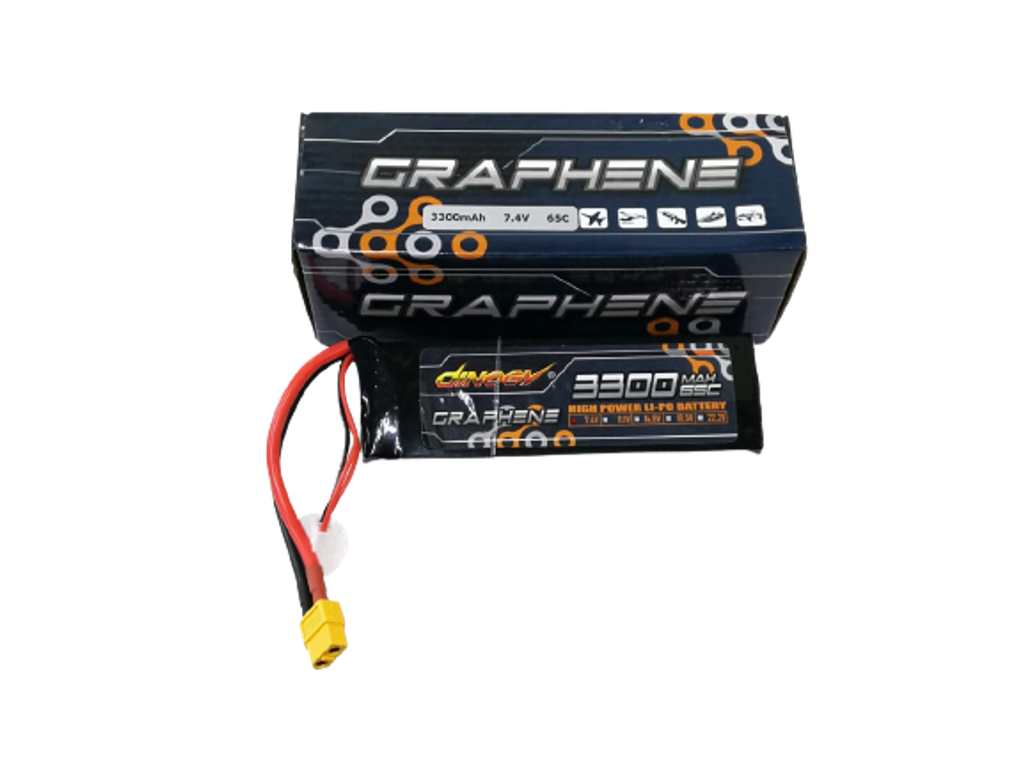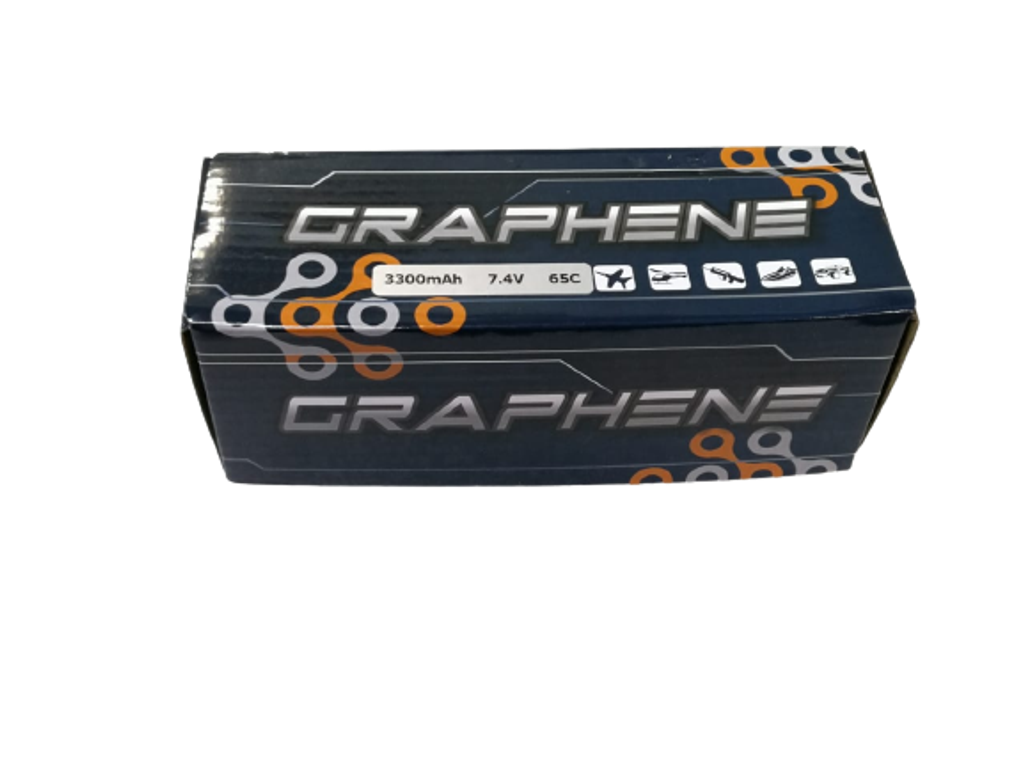Dinogy GRAPHENE High Power LiPo batteries is the CHOICE OF CHAMPIONS
The name synonymous with performance, reliability and innovation is excited to release a powerful new battery chemistry in the Dinogy Graphene! Recently discovered in 2004 by 2 scientists, the discovery even won them the Nobel Prize for Physics in 2010.
What does this really mean for you? Well not only do Graphene batteries go harder for longer but they're unlike anything you have seen or used before.
Dinogy Graphene packs utilize carbon in the battery structure to form a single layer of graphene just 0.335nm thick, making that type of battery substrate the thinnest known to mankind. The graphene particles form a highly dense compound allowing electrons to flow with less resistance compared to traditional Lipoly battery technologies.
The result is a battery capable of maintaining greater power output whilst remaining much cooler under load. Since heat and resistance are the natural enemy of batteries Graphene chemistry has significantly reduced these problems and the result is an incredible boost in cycle life.
Dinogy Graphene batteries are the new standard for serious hobbyists who require POWER ON DEMAND.
with 65C Constant on tap, 130C on BURST!!!
This size will fit most tanks, it is the same size as the standard HL yellow Ni-Cd or black Li-Ion battery.
other sizes are available.
Specs:
Capacity: 3300mAh
Voltage: 2S1P /2 Cell / 7.4V
Discharge: 65C Constant / 130C Burst
Weight: 186g (including wire, plug & case)
Dimensions: 15x42x135mm
Balance Plug: JST-XH
Discharge Plug: XT-60
Note: Graphene LiPo Batteries only require a standard Lipo battery charger.
Advantages over traditional Lipo batteries.
• Power density: 0.15-0.17kw/kg (5Ah-16Ah)
• Power density: 0.13-0.15kw/kg (1Ah-4.9Ah).
• Stable High pack voltage through duration of use.
• High discharge rate, giving more power under load.
• Internal impedance can reach as low as 1.2mO compared to that of 3mO of a standard Lipoly.
• Greater thermal control, packs stay much cooler under extreme conditions
• Higher capacity during heavy discharge.
• Maintains higher pack capacity even after hundreds of cycles
• Fast charge capable, up to 15C on some batteries.
• Longer Cycle Life (reportedly in excess of 1500 during testing).


